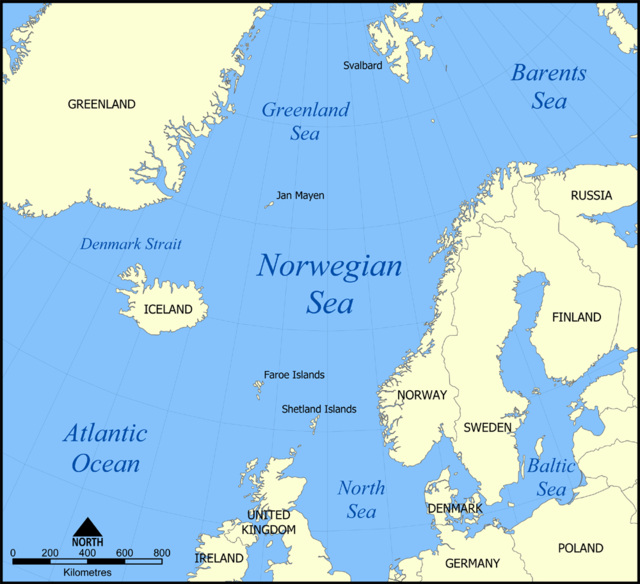Loading AI tools
Geographical Coast Line From Wikipedia, the free encyclopedia
The coastline of Norway is formed along the Skagerrak, North Sea, Norwegian Sea, and Barents Sea. This considers only the mainland coastline and excludes Svalbard.

A straight line along Norway's sea borders (the coastal perimeter) is 2,650 kilometers (1,650 mi) long.[1][2] Along the coast there are many fjords, islands, and bays, resulting in a low-resolution coastline of over 25,000 kilometers (16,000 mi).[3] At 30-meter (98 ft) linear intercepts, this length increases to 83,281 kilometers (51,748 mi)[4] (see the coastline paradox). Much of Norway's wealth is linked to its long coastline; for example, the petroleum industry, maritime transport, fishing, and fish farming.
The Norwegian landscape was formed by glaciers that eroded the basement rock and formed countless valleys and fjords, as well as the characteristic skerries that protect the land from the ocean along most of the mainland coastline. There are only a few shorter or longer stretches where the mainland is exposed to the open sea along the coast: at Lindesnes, Lista, Jæren, Stad, Hustadvika, and Folda in Trøndelag, and along the Varanger Peninsula.
Because of countless peninsulas and inlets, large and small islands, holms, and skerries, the Norwegian coast is among the longest in the world. Some facts about the Norwegian coastline:
Seamless Wikipedia browsing. On steroids.
Every time you click a link to Wikipedia, Wiktionary or Wikiquote in your browser's search results, it will show the modern Wikiwand interface.
Wikiwand extension is a five stars, simple, with minimum permission required to keep your browsing private, safe and transparent.